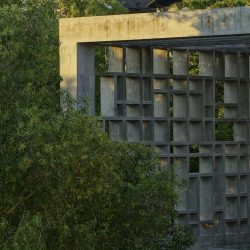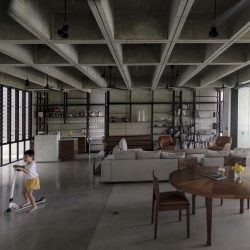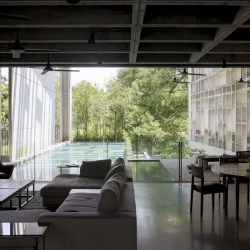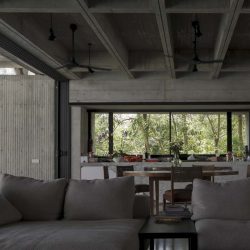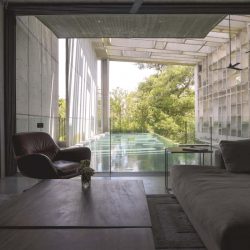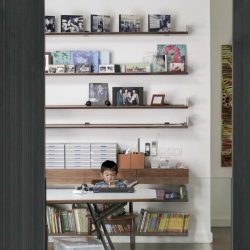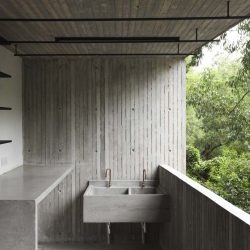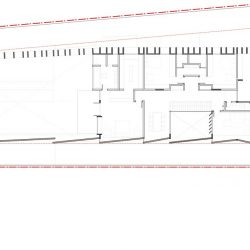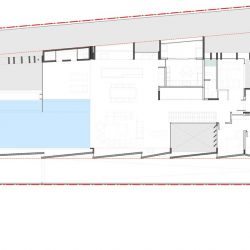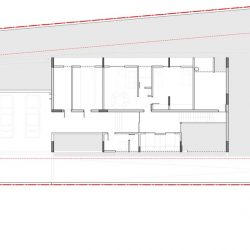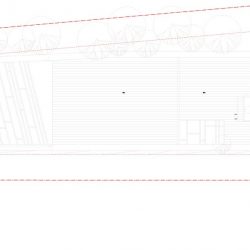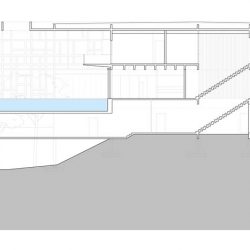CHEMPENAI HOUSE BY WHBC ARCHITECTS FRAMES AND EMBRACES THE SURROUNDING JUNGLE IN A “CONCRETE TROPICAL BOX.” art4D CAUGHT UP WITH THE KUALA-LUMPUR BASED ARCHITECTURE STUDIO TO LEARN HOW THE PROJECT FINDS PLACE AMONGST THE TREES WHILE “ENCOURAGING THE ENDURING LANDSCAPE TO GROW BOTH AROUND AND WITHIN.”
Could you introduce the Chempenai House and your goals/objective for the project?
BC ANG: As a concrete tropical box that embraces the lush jungle, the project was envisioned as an inward looking abode that safeguards its interior from the tropical sun and rain while, at the same time, embraces the dense, natural floral enclave that the house sits within.
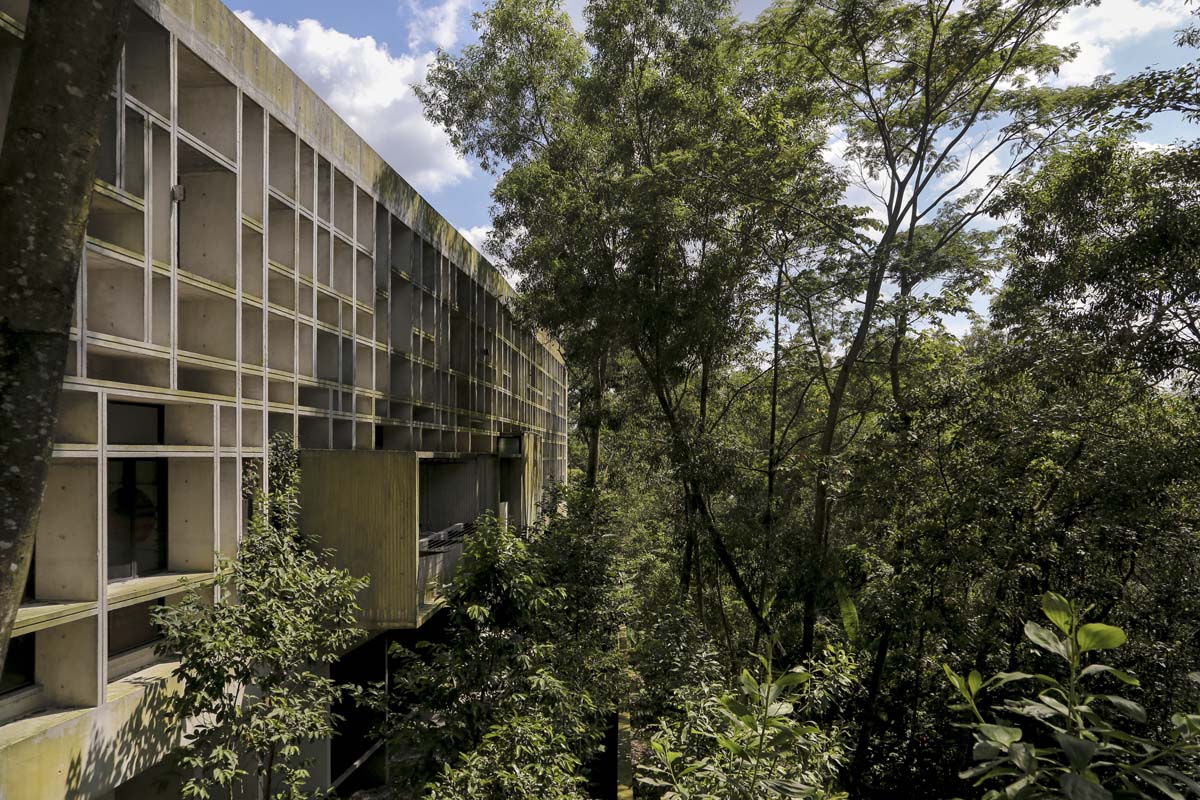
Chempenai House, Photo © WHBC Architects
The façade is an obvious feature of interest which I understand has sun-filtering functions. Could you discuss its design and what it brings to the project?
BC: Set in the tropics, we designed a concrete egg-crate structure that envelopes the house to keep the heat out, but draws daylight in to create comfortable spaces within. The perforated nature of this envelope allows the existing overgrowth to grow into the volume of the house, thus softening the boundary of inside and outside.
The egg-crate structure is built of in-situ concrete as a sun-filtering device at the depth of 900mm. The structure naturally allows daylight to filter through but resists radiation. Concrete fins of 150mm thickness reinforce the structure by framing openings of various sizes at a controlled rhythm. This further facilitates the regulation of light intensity inside.
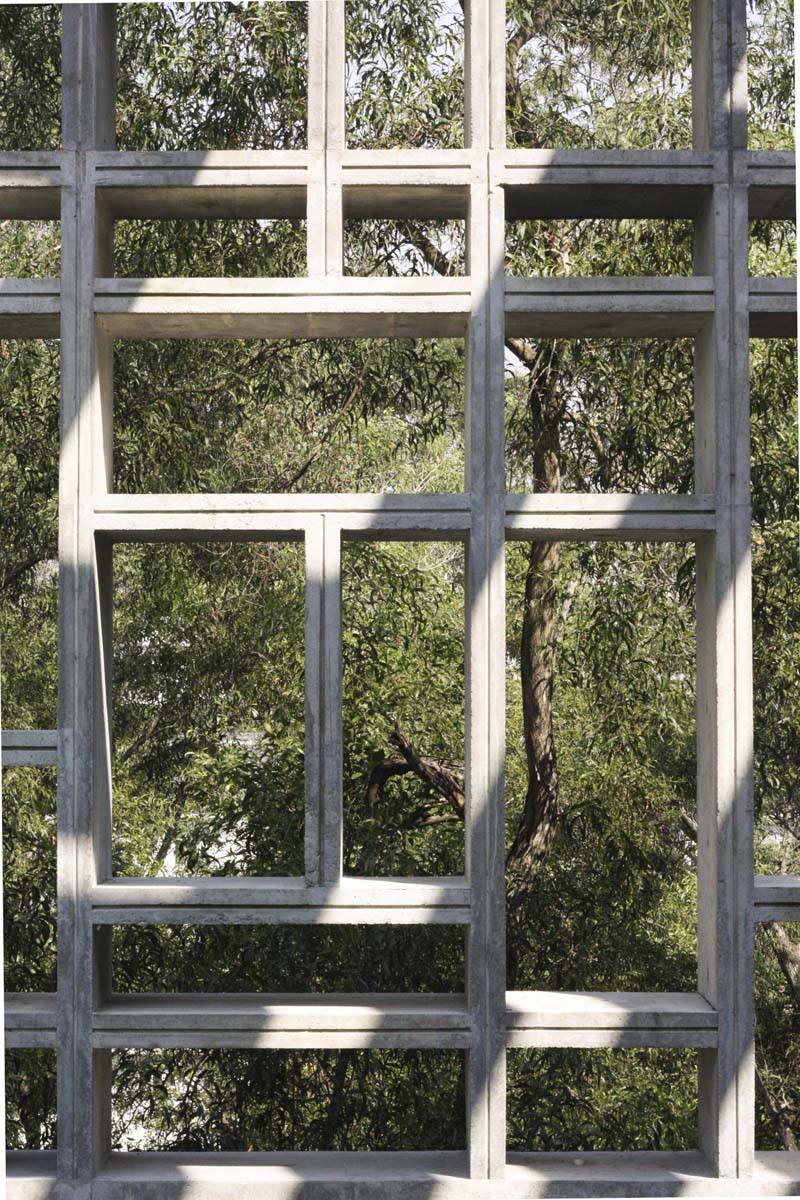
Chempenai House, Photo © WHBC Architects
I understand that the design is aimed at, slowly but surely over time, increasing the closeness of its relationship with the surroundings. Could you discuss the ways in which you hope for that relationship to evolve over time.
BC: The main approach to the house is via a bridge flanked by multiple mature Albizia trees. From the entrance, a relatively narrow walkway, adjacent to a stairway and an internal courtyard, leads to the open living area. Upon arrival, the suppressed journey opens outwards to a double volume deck reflected upon a pool. The pool and the adjoining garden are enclosed within the volume of this egg-crate structure. These spaces are completely surrounded by green foliage as they hover close to the tropical canopy. Looking beyond the pool and the garden, one is greeted with a clear and extended panoramic view of the forest. On upper floors, windows are specially designed to capture views of big beautiful trees.

Chempenai House, Photo © WHBC Architects
A seemingly heavy concrete box, it touches the ground lightly, places itself among the trees and encourages the enduring landscape to grow within it. We hope that the house will slowly merge into the nature surrounding it.
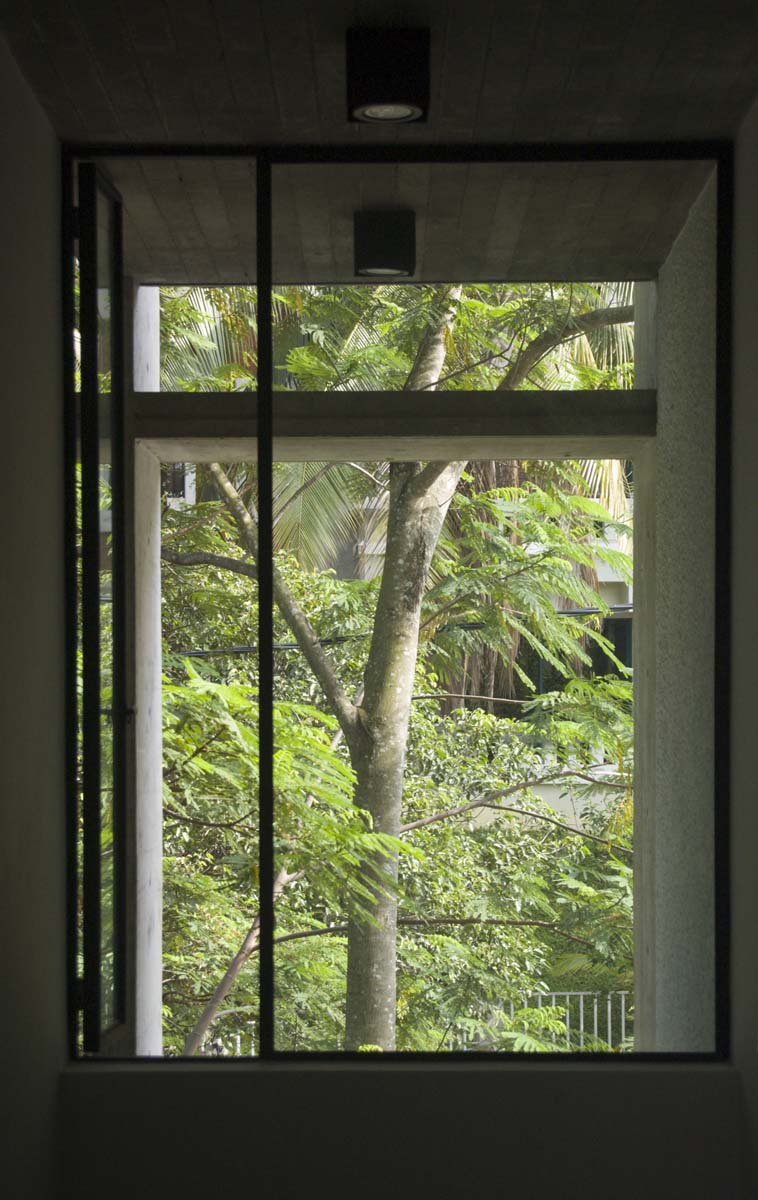
Chempenai House, Photo © WHBC Architects
The design is noted for its ability to blend in rather than stand out, although not for lack of a distinctive if not atypical character for the location. How did you go about finding a fitting balance between that which may be unconventional yet appear natural?
BC: From the entry level, the existing site slopes downwards to the back. The design takes advantage of the sloping terrain to keep the dampness and humidity out within a tropical environment. The spaces are arranged to keep most parts of the house raised from the ground. This elevates the house to sit among the canopy of trees.
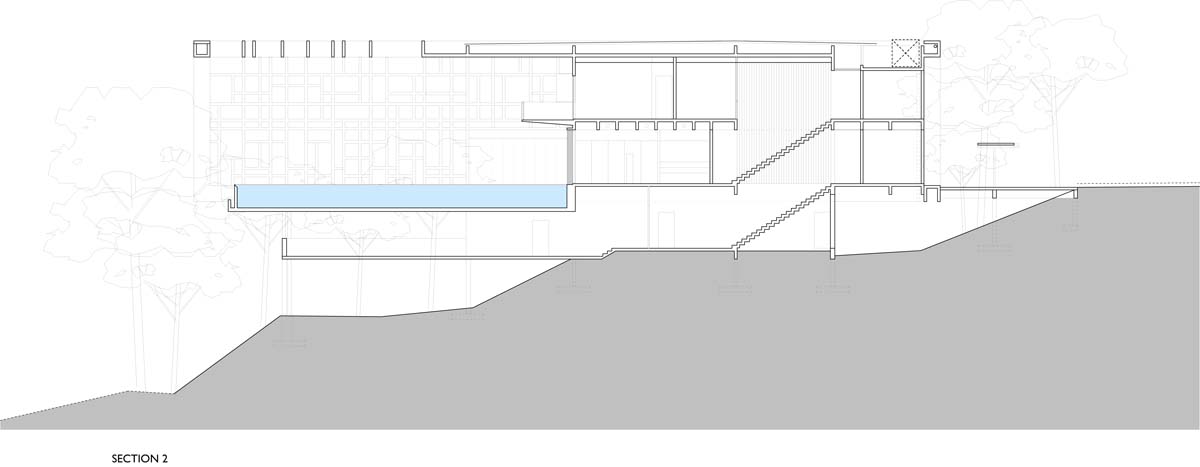
Chempenai Section, Image © WHBC Architects
The main spaces – living, dining and the pool are positioned at the entry level; the bedrooms are placed on the upper floor; finally, a garage and service area sit on the lower ground. This ensured that dampness and pests are kept away, keeping the house airy and dry.
We believe in the attitude that nature is our boss, never the other way round.
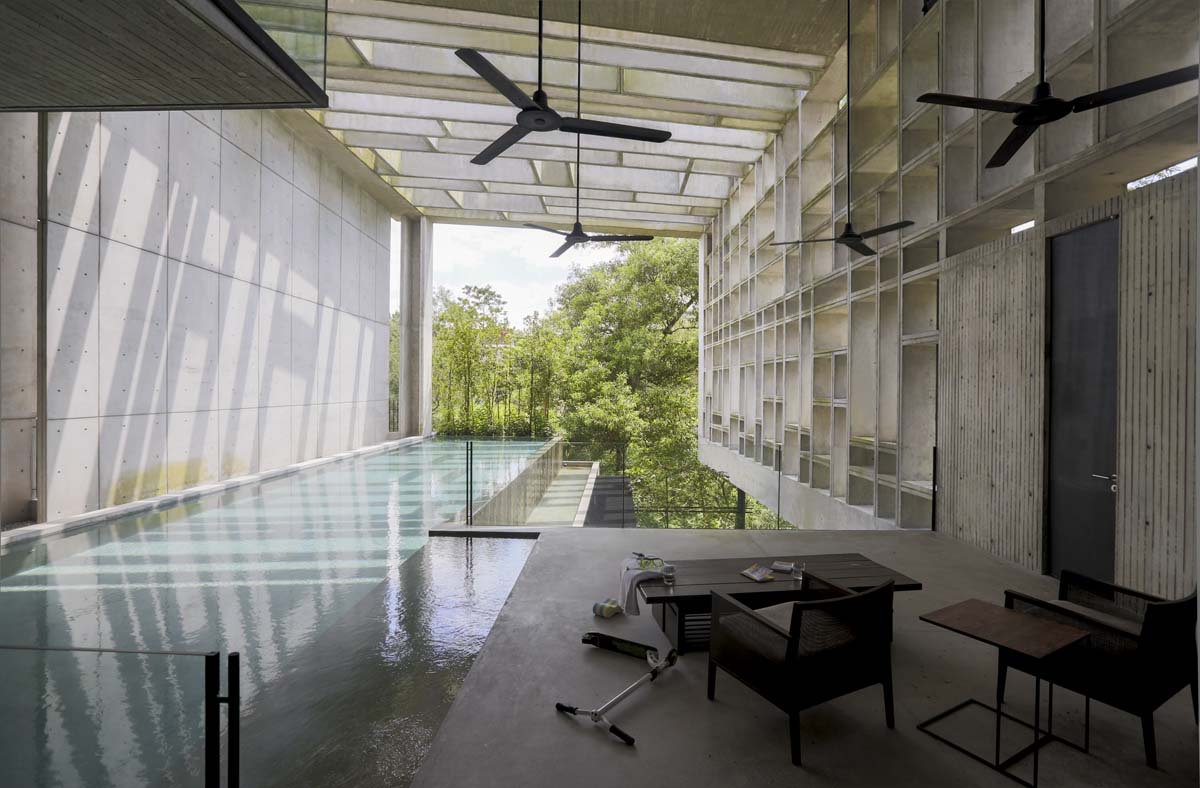
Chempenai House, Photo © WHBC Architects
What‘s next and on deck for WHBC? Are you continuing your work towards pushing the utilization of concrete as a building material?
BC: We are interested in design problems. Therefore we are currently working with a whole range of different solutions and different materials.
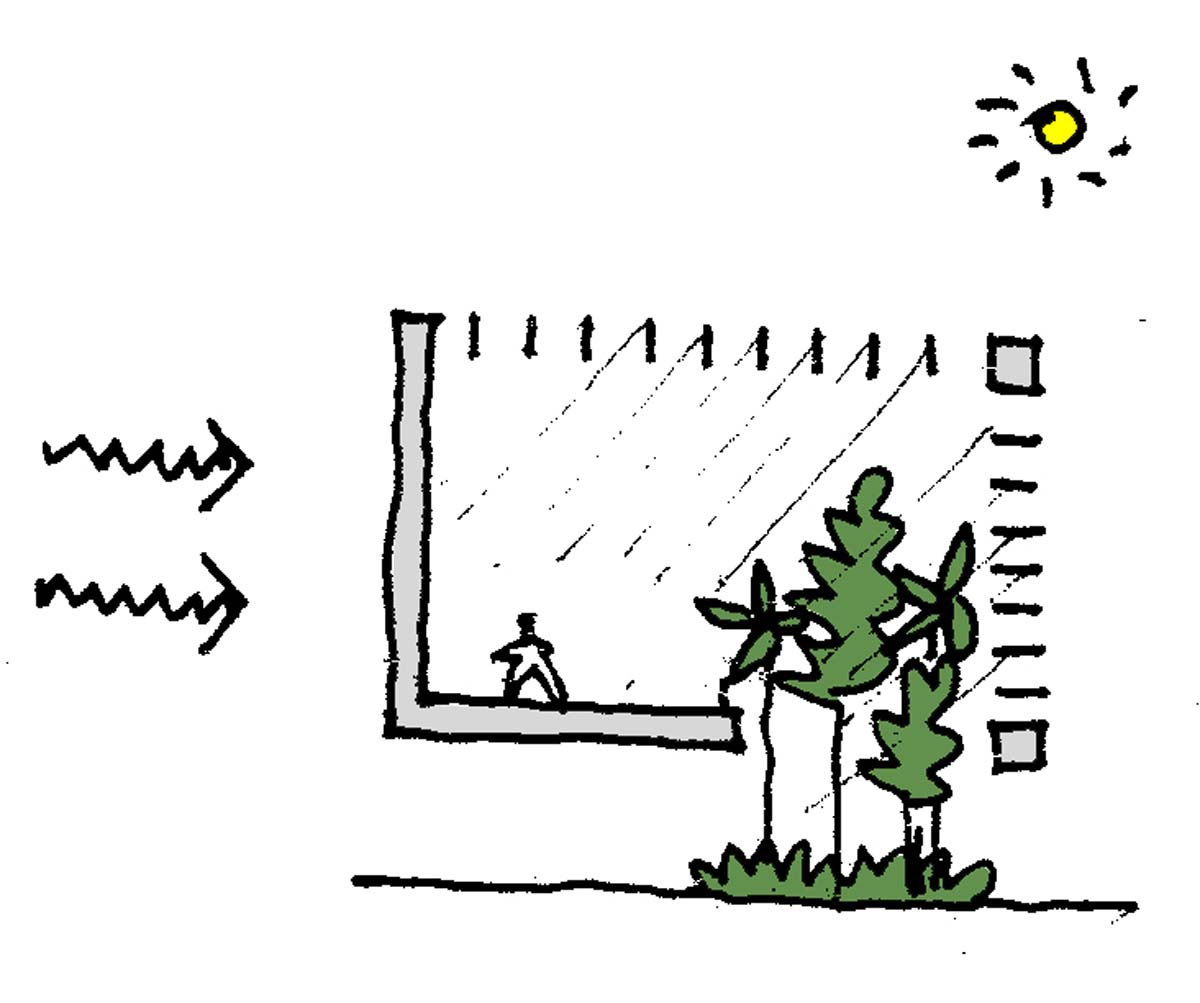
Chempenai House, Image © WHBC Architects



